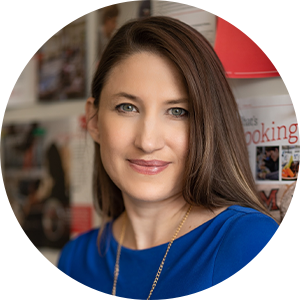Dear Jaime is Volt’s regular advice column. The questions in today’s post are samples of the kinds of questions that Jaime Hunt, our columnist and a higher ed marketing pro, gets in her inbox. To send her a question you’d like answered (anonymous or signed, you decide!), you can submit your question here or send an email to dearjaime@voltedu.com.
Dear Jaime,
As a higher ed marketer, I want to support my DEI colleagues, but with DEI work facing significant restrictions, I’m unsure of the best way to help. How can I offer meaningful support within these constraints?
— Walking a Fine Line
Dear Walking a Fine Line,
Amid all the turmoil around DEI programming in the United States, figuring out the best ways to support this work without getting your university in trouble can feel challenging. As marketers, we want to do our part to make sure students feel like they are welcomed and supported, but we don’t want to put a spotlight on our universities or our DEI colleagues’ work.
The good news is, there are things that you can do. And they don’t have to be hard.
- Keep telling stories. Higher ed storytellers have always shared the stories of our diverse student bodies. This isn’t the time to back away from that. Keep telling authentic stories that highlight the emotional journeys of your campus community. Showcase the breadth of the student experience in ways that celebrate belonging and highlight the available support structures.
- Reframe the conversation. Tie inclusive messaging to priorities like student success and workforce readiness, which are harder for DEI opponents to challenge. And instead of using terms like “diversity” and “inclusion,” focus on “sense of belonging” and “academic excellence for all students.” These phrases can achieve similar goals without triggering backlash.
- Shift the language. If you are adapting language on your website or in marketing materials, consider ways to shift the language rather than delete it. Instead of “diversity,” talk about “broad perspectives” or “preparing students for a global workforce.” Instead of “equity,” focus on “ensuring every student has the resources they need to succeed.” Instead of “inclusion,” discuss “creating a welcoming community for all.”
- Be a good colleague. Check in on your DEI colleagues. Many are feeling isolated and demoralized. Let them know that you see them and appreciate them. Ask if there are things you can do to help, and offer to brainstorm ways to reframe their work.
Although the landscape of DEI work may be shifting, the fundamental goal remains the same: ensuring that all students feel supported and empowered to succeed. Now is not the time to retreat, but to evolve and to continue telling the stories that matter.
Dear Jaime,
I’m a marcomm leader, and I often feel like my entire job is putting out fires. What can I do to not lose sight of the bigger picture?
— Smoke Everywhere, No Clear Vision
Dear Smoke Everywhere,
That’s a great question, and it’s a common challenge for leaders, especially those in marcomm roles where urgent issues constantly arise. As someone who sat in a chief communications and marketing officer role for almost a decade, I found it important to be as intentional as possible about keeping my eye on strategy. It can be easy to slip into firefighting, but although it addresses the current challenge, it doesn’t help the university in the long term.
Here are strategies I’ve deployed.
- Block time for strategic thinking. Set aside regular, non-negotiable time on your calendar for big-picture planning. Even 30-60 minutes a week can help you refocus on long-term goals. I’m more of a morning person than a night owl, so I opted to come in a bit before everyone else so I could have a quiet office and a fresh mind for thinking about the long-term vision.
- Look for opportunities to delegate problem-solving to team members. Even if there are rooms they can’t be in and information they can’t be privy to, there are likely tasks that you could ask other people on your team to take on that will free up your time. Your bandwidth and brainpower are finite and should be used for solving the biggest challenges and setting the largest vision. Don’t waste it on tasks others in the department can tackle.
- Ask yourself (and your team) future-oriented questions regularly. What are we doing today that will move us closer to our long-term goals? If we continue down this path, where will we be in a year? What trends are emerging that we should be preparing for? This keeps your–and your team’s–eye on the prize. I found it helpful to have goal champions on my team who were responsible for ensuring that the longer-term goals moved forward and didn’t become something that made us say, “Oh shoot, we never did that” at the end of the year.
- Sometimes, staying strategic means letting go of things that don’t serve your long-term vision. What’s taking up time but not adding real value? Consider eliminating or automating it. AI can be helpful in freeing up time to focus on the bigger picture.
Firefighting will always be a part of the job, but it doesn’t have to define it. By being intentional about how you spend your time, you can shift from reactivity to proactivity. The more you prioritize big-picture thinking, the more you’ll shape the future, rather than just responding to it.



